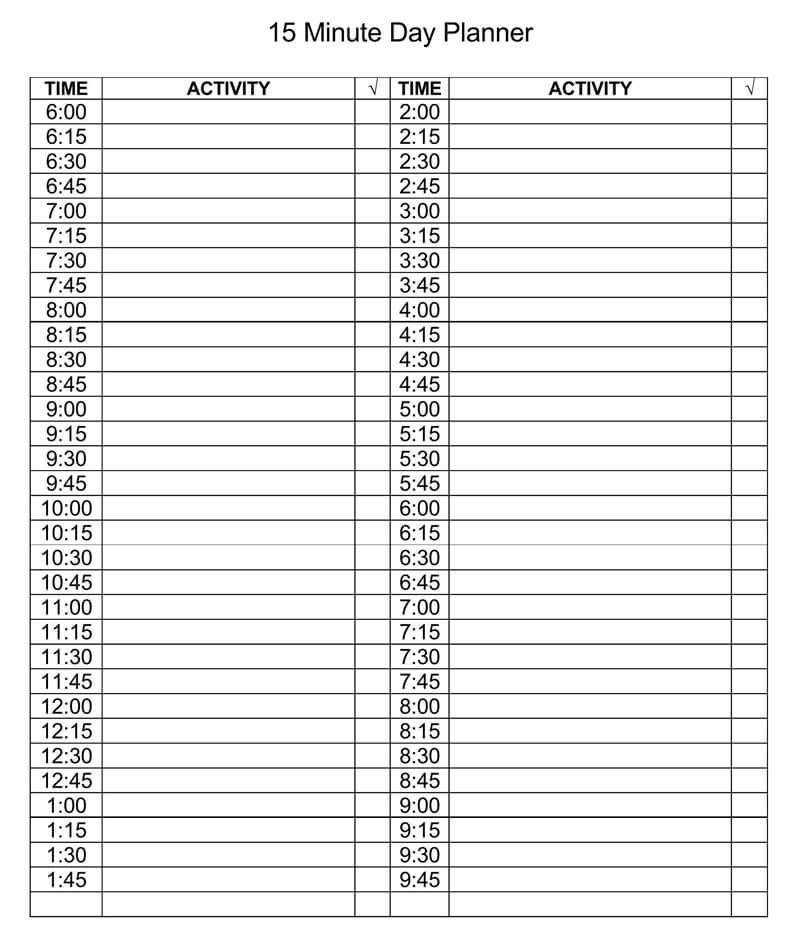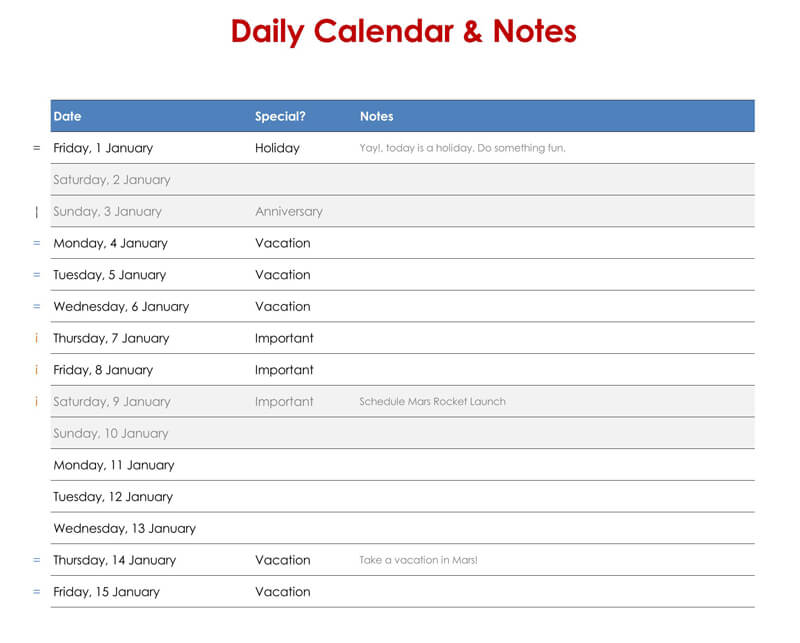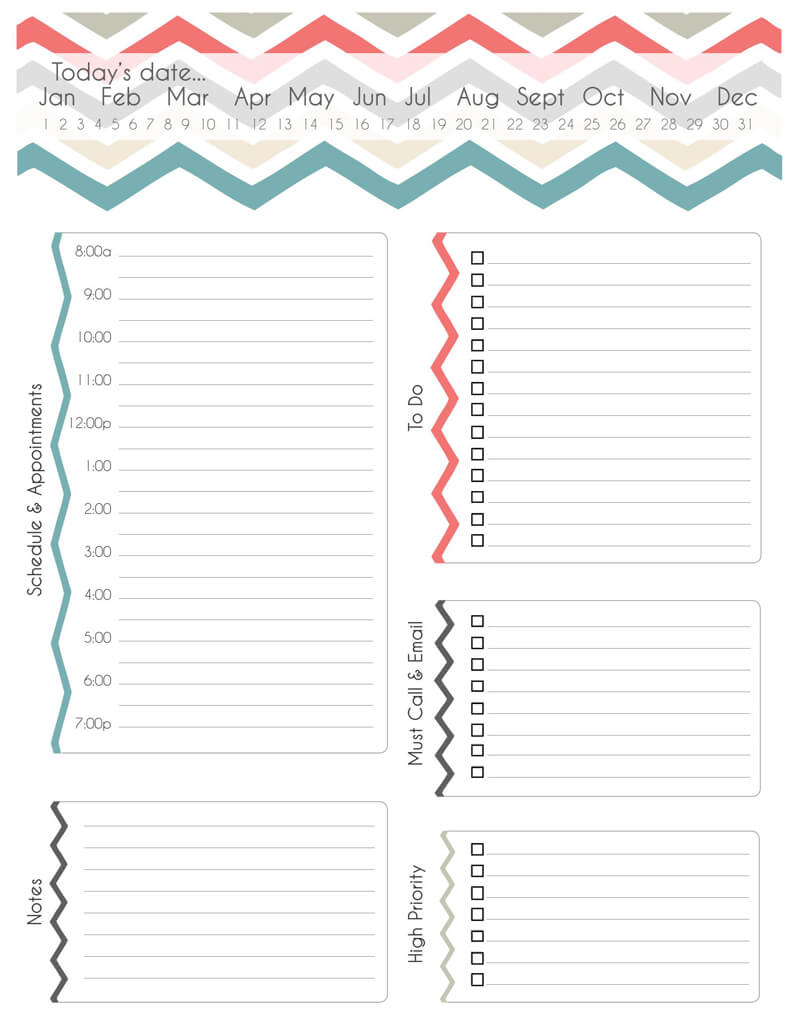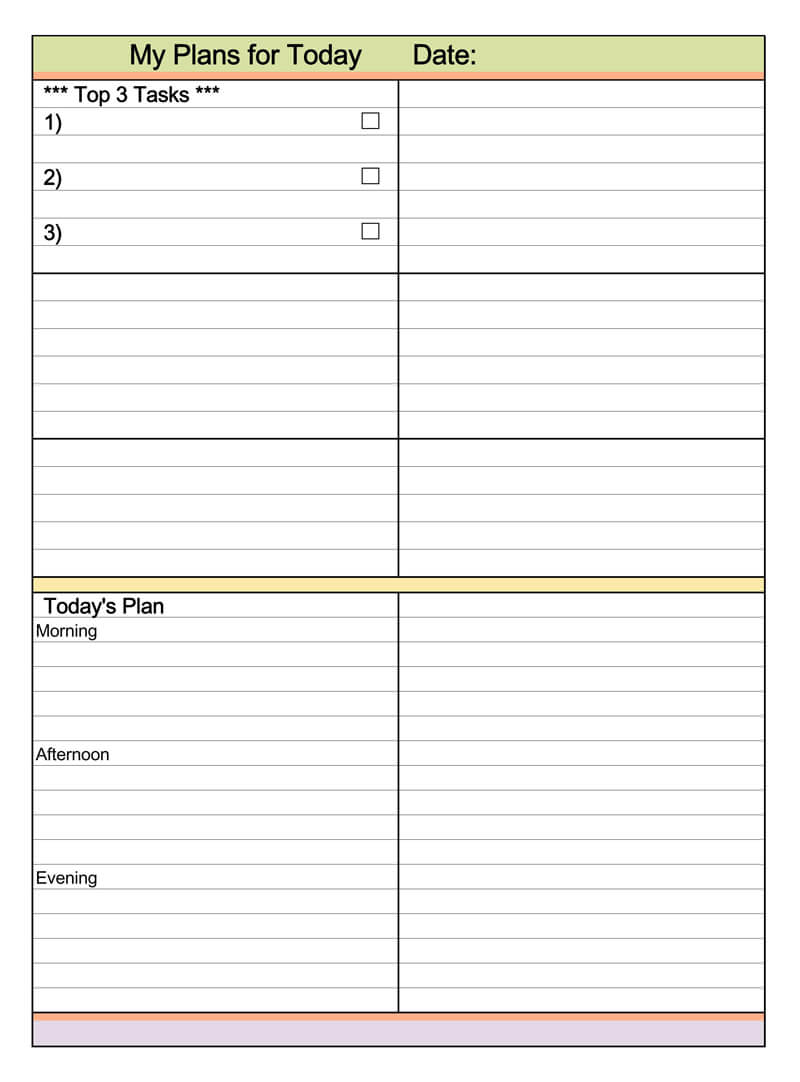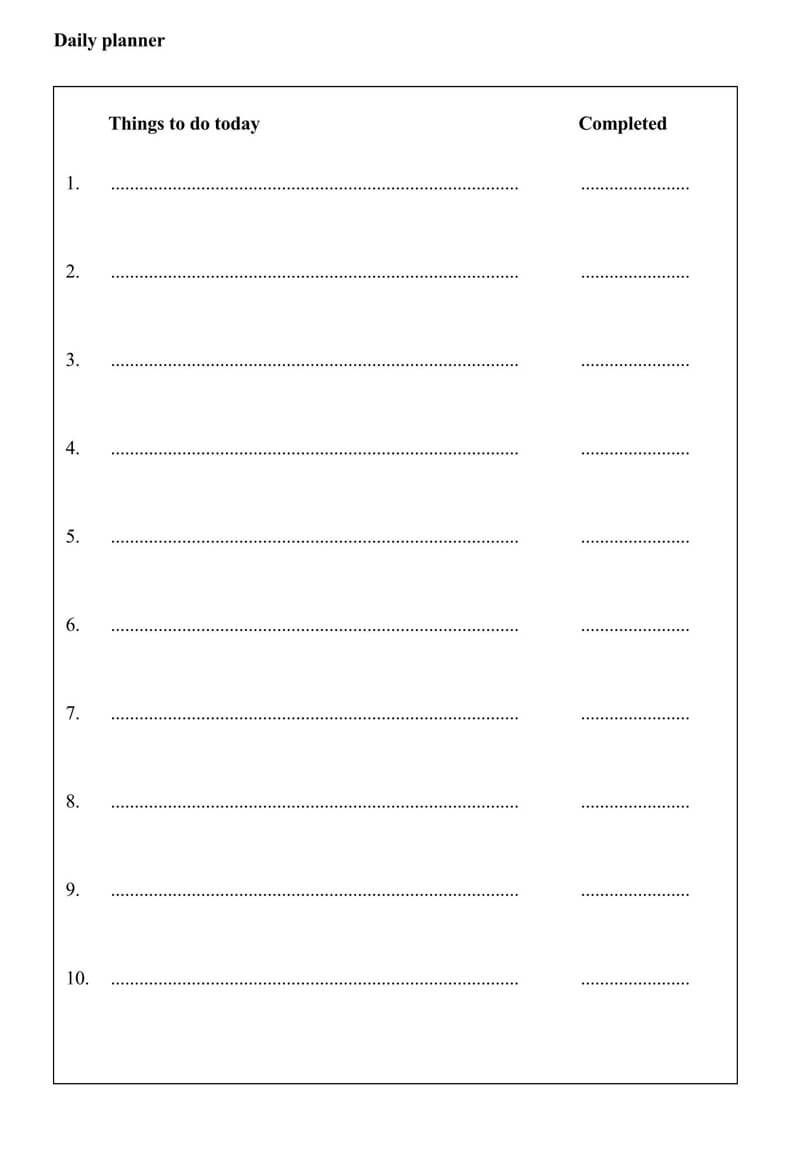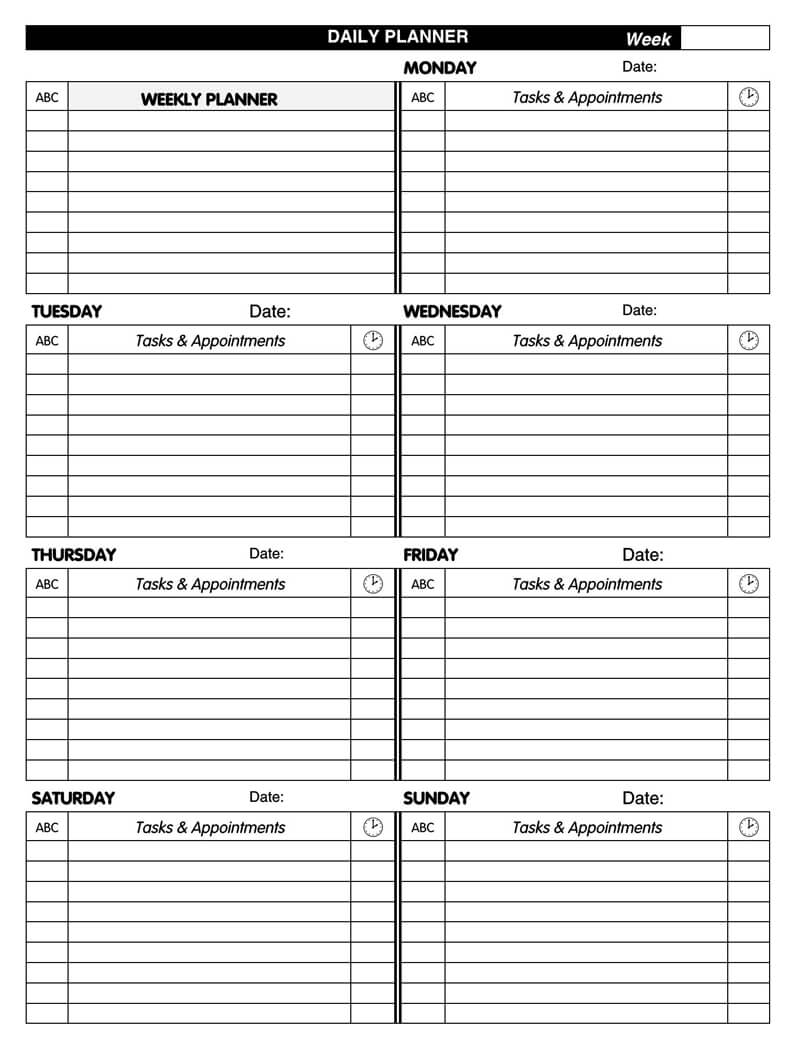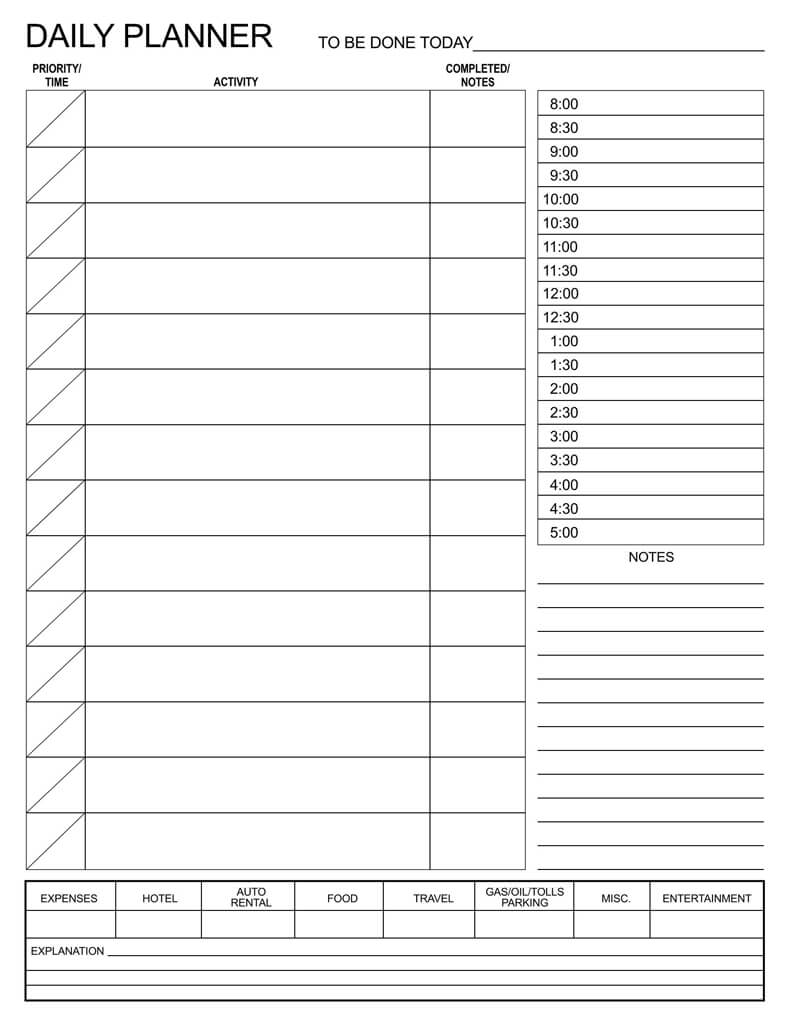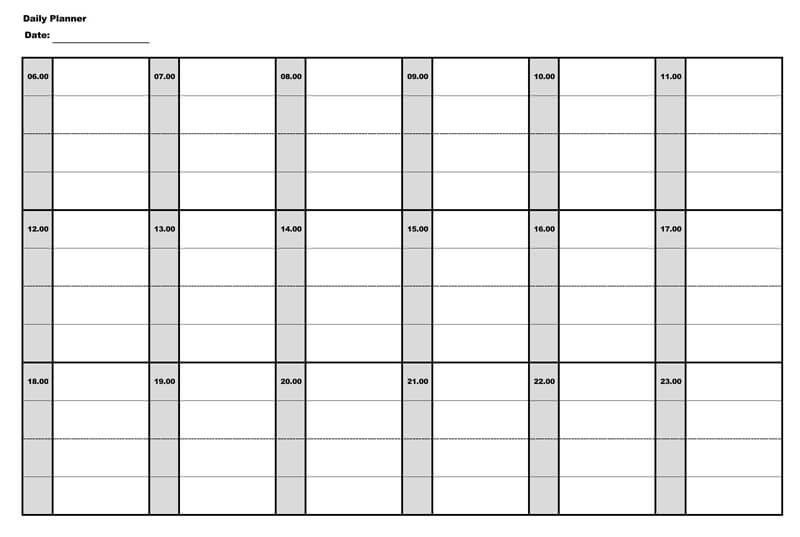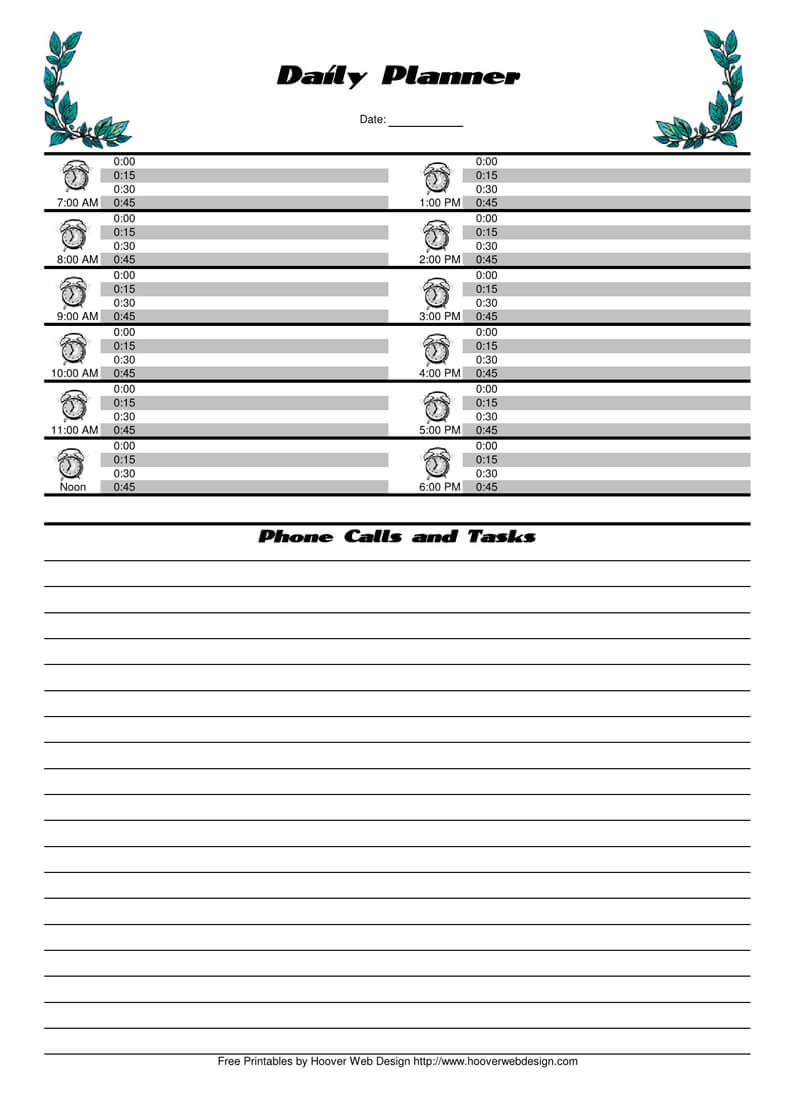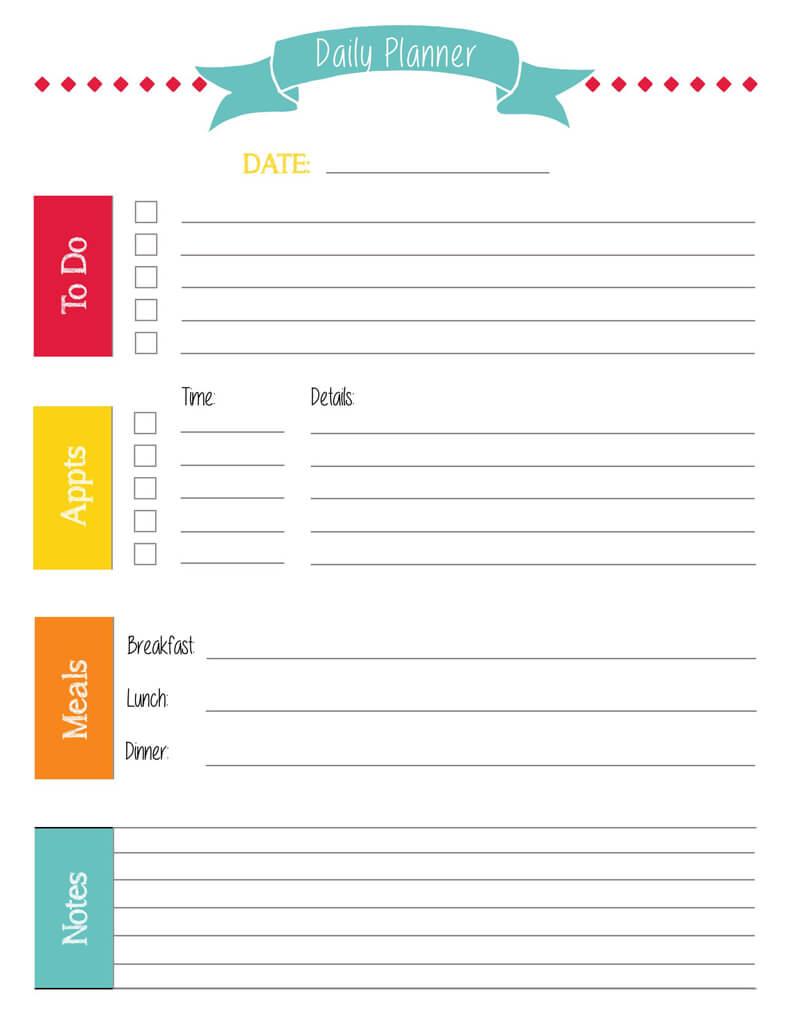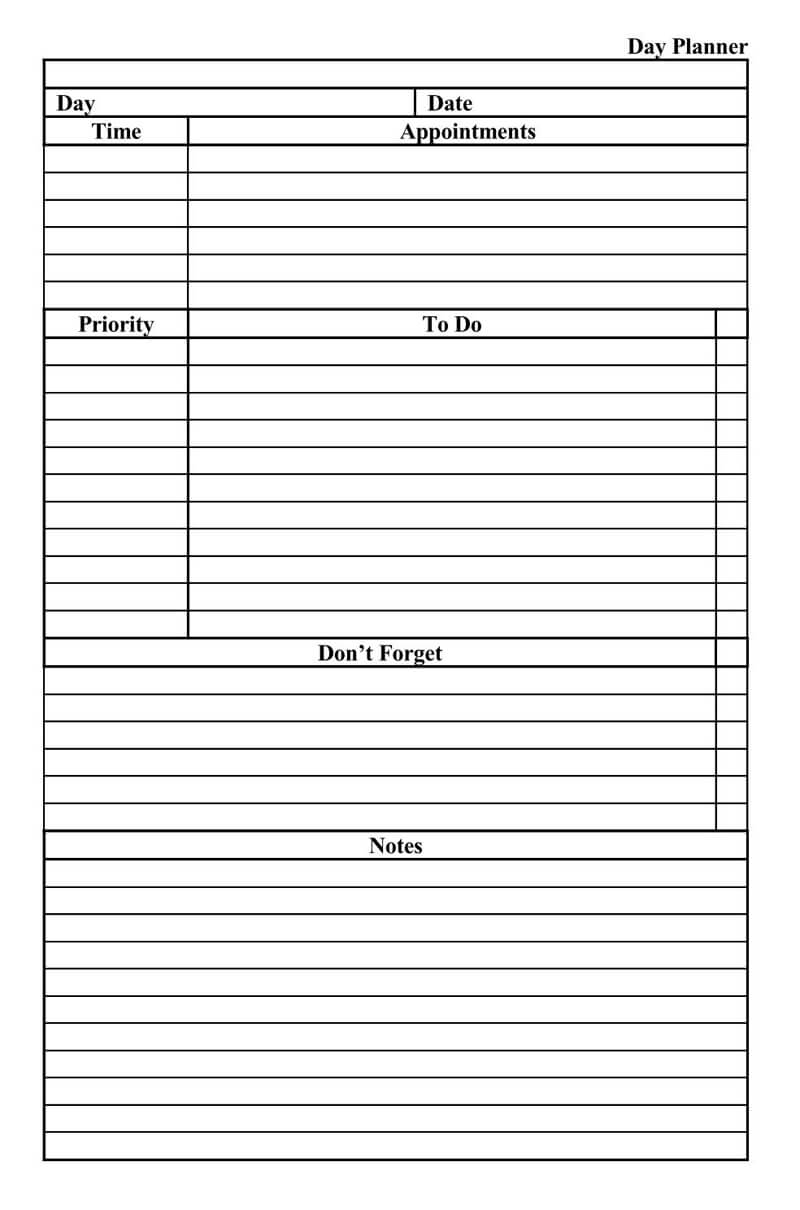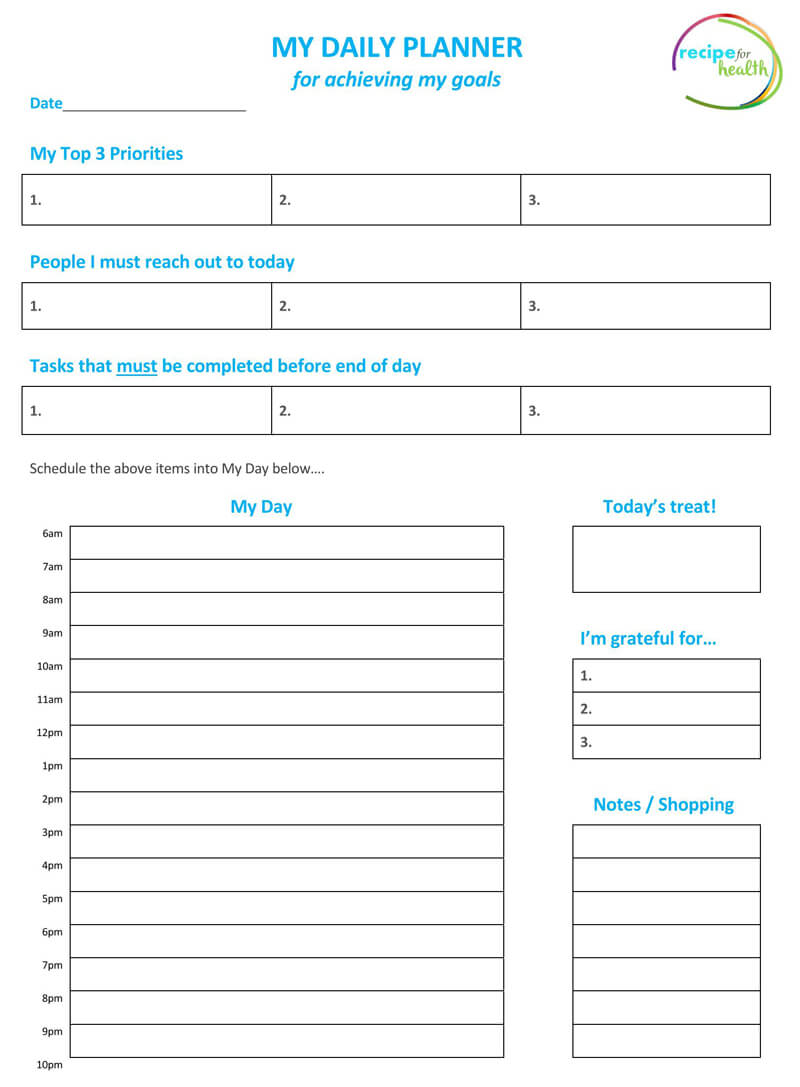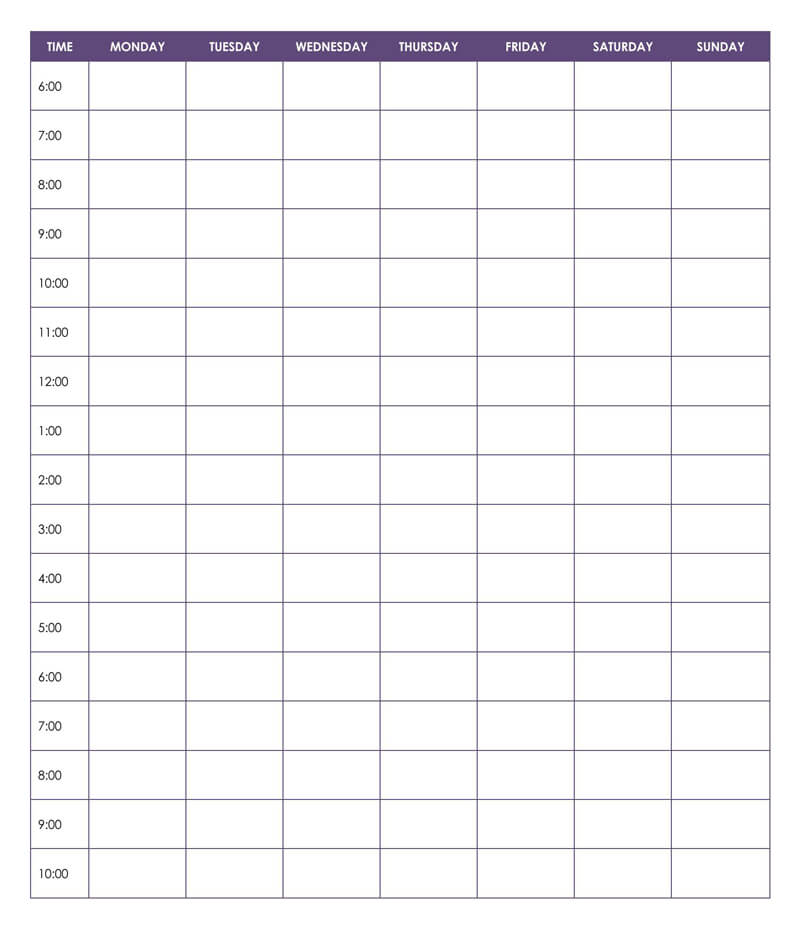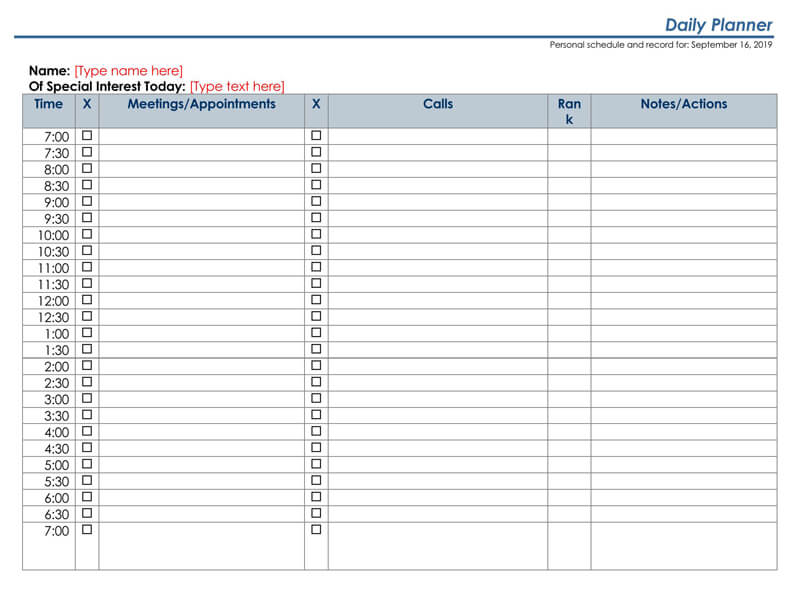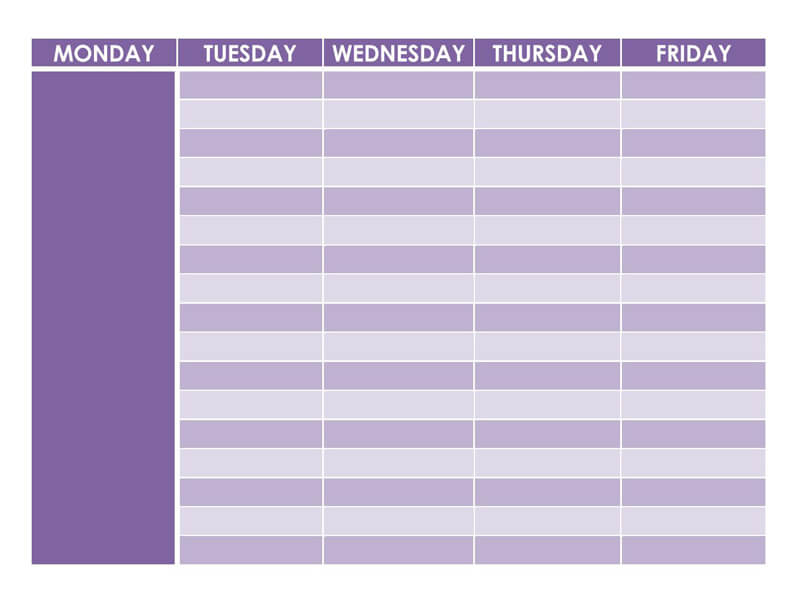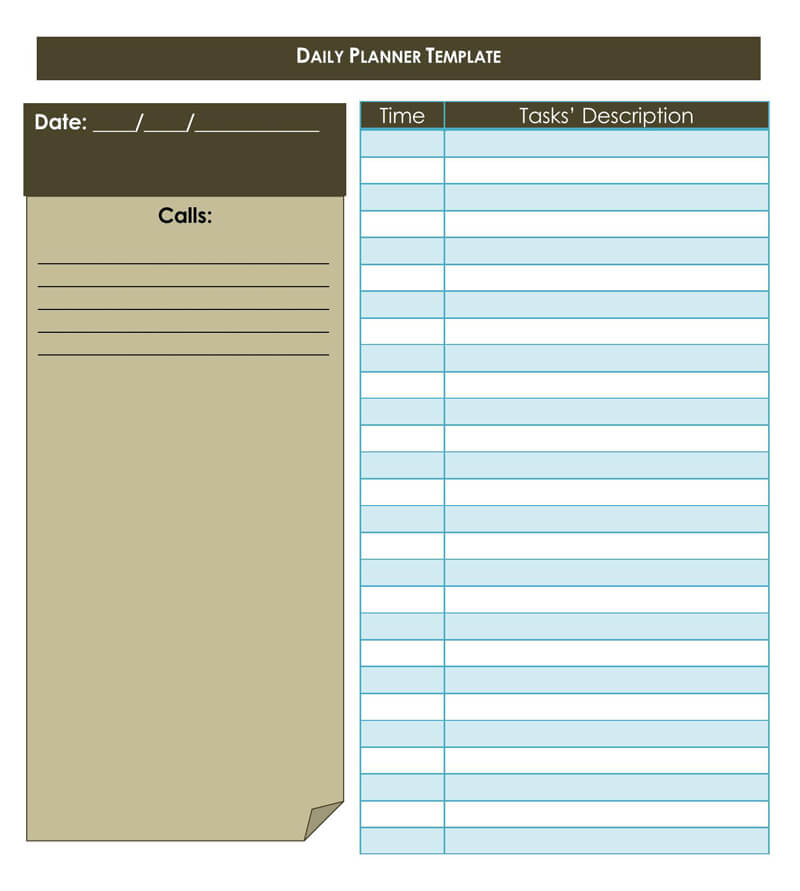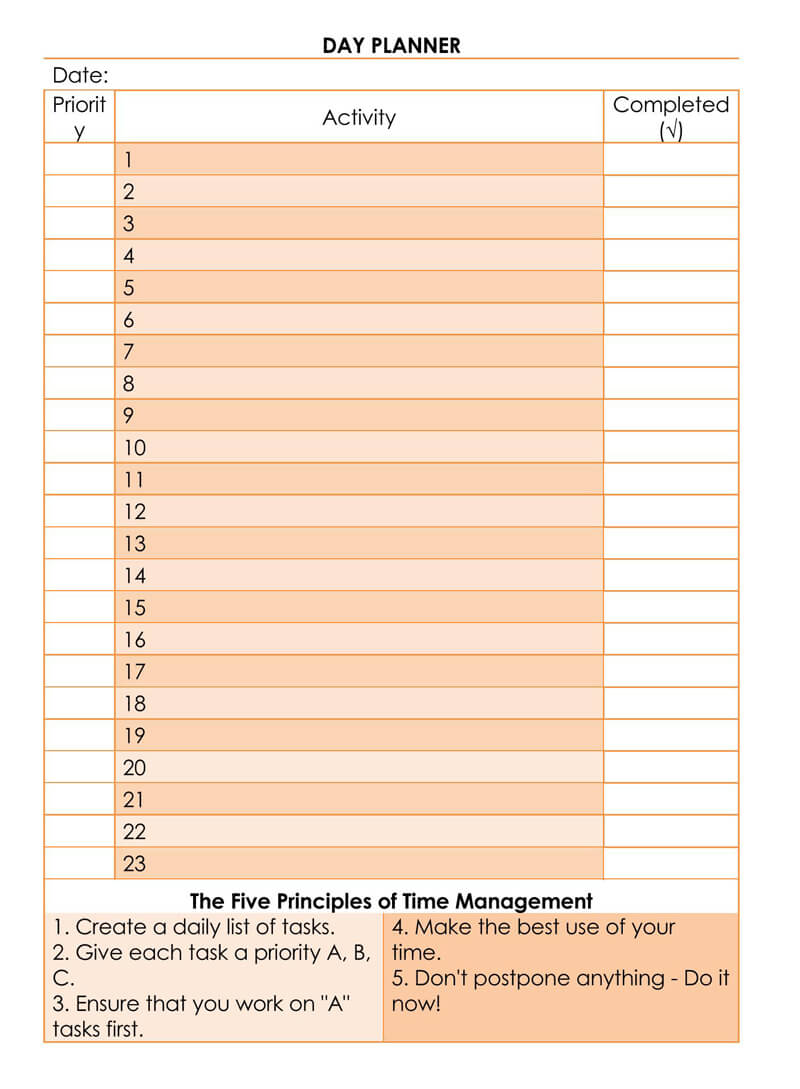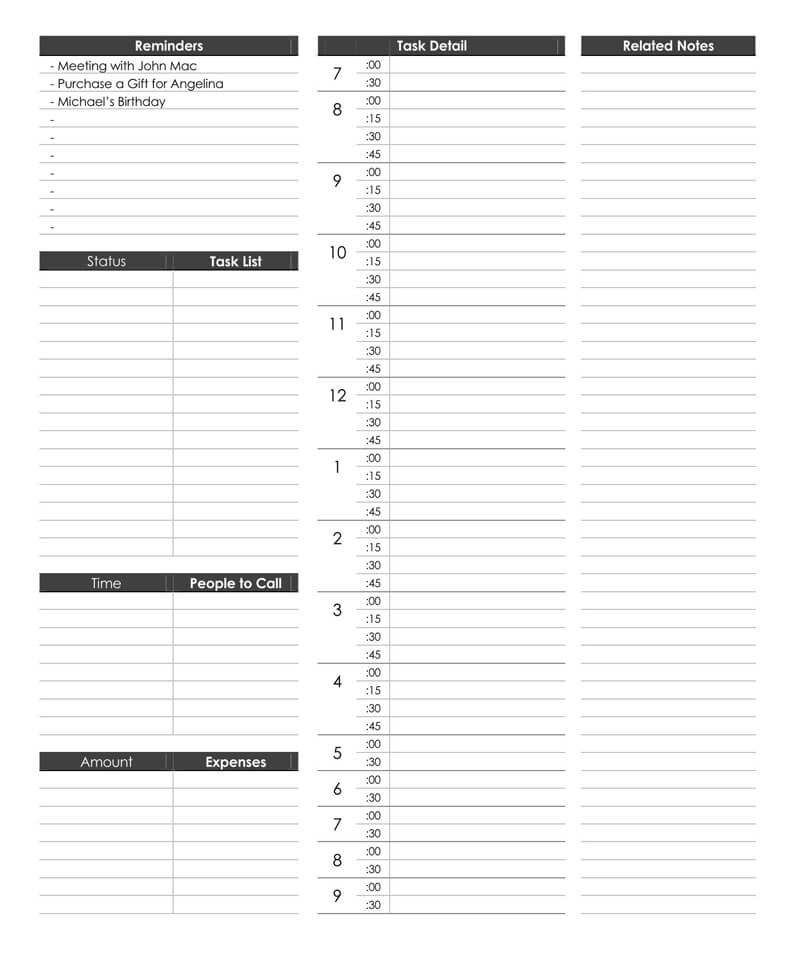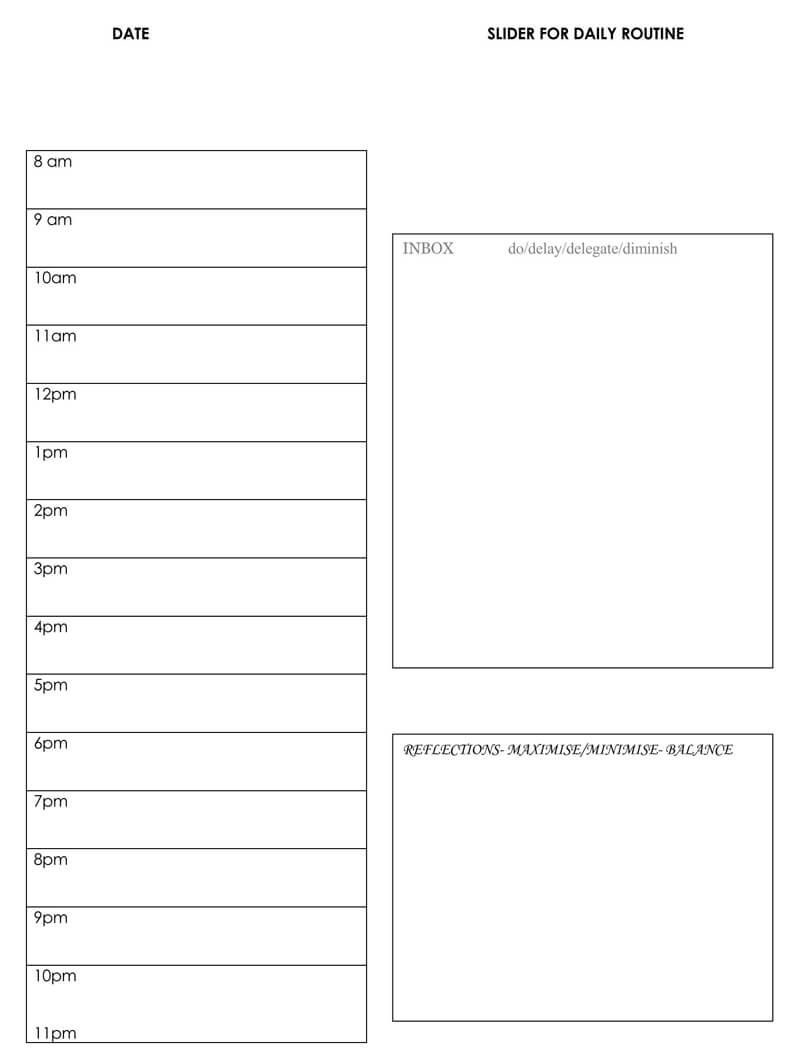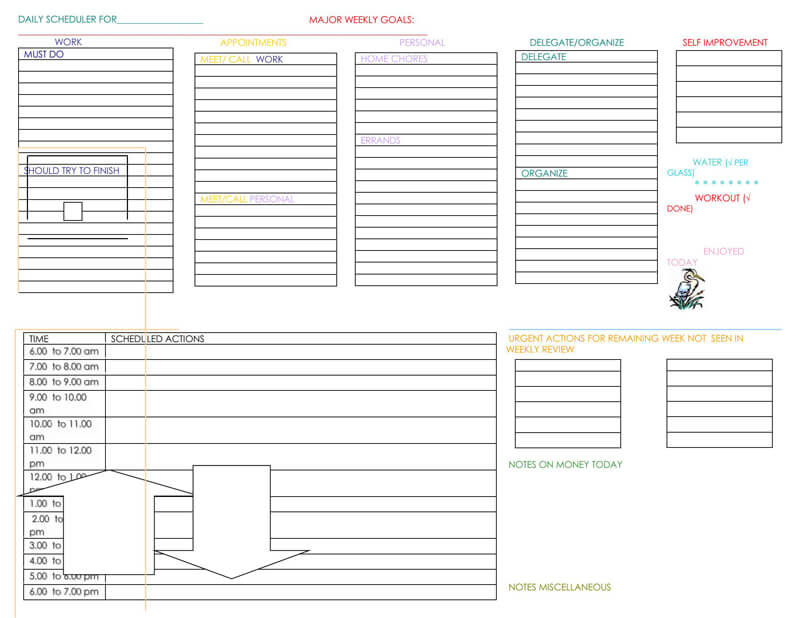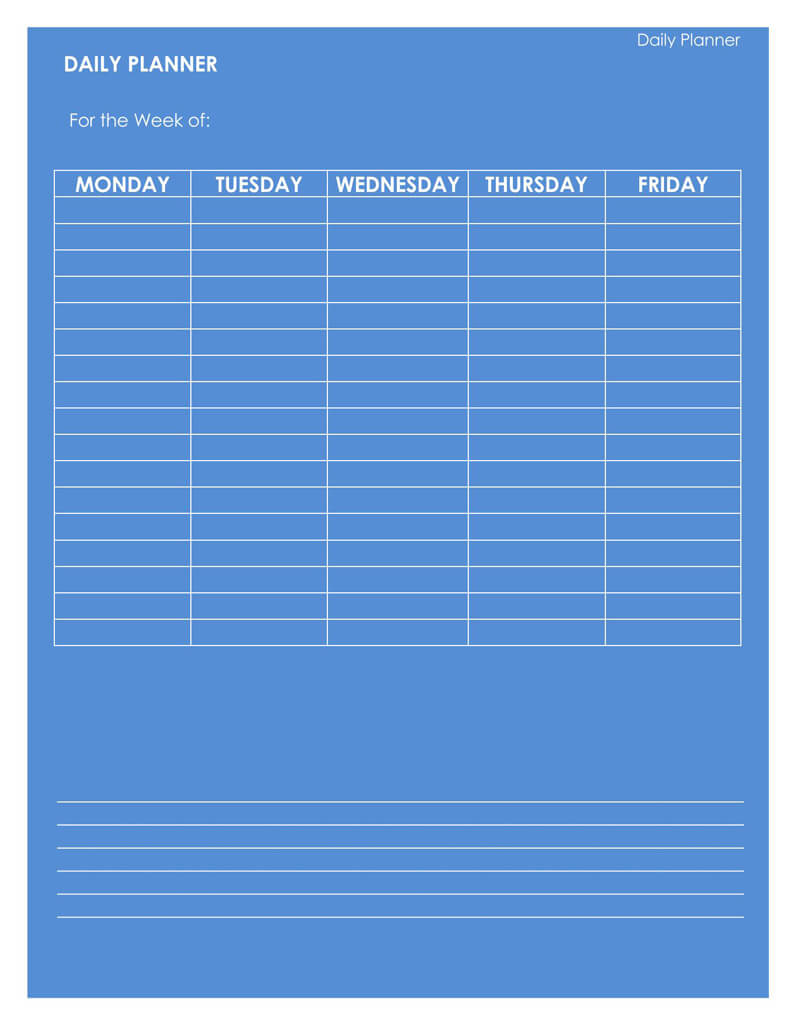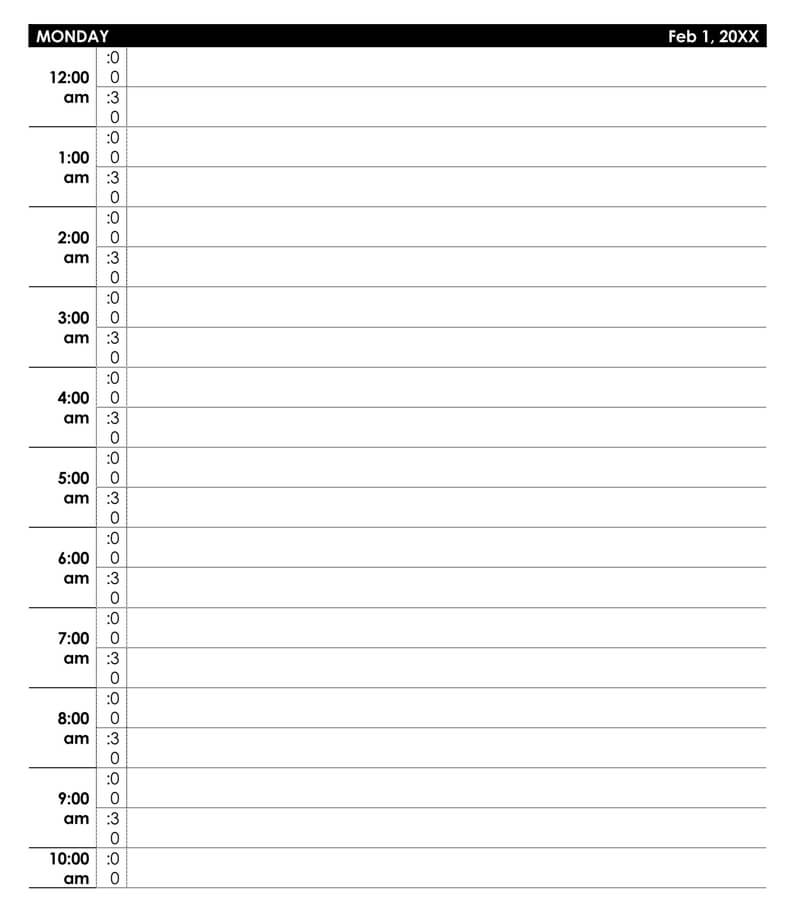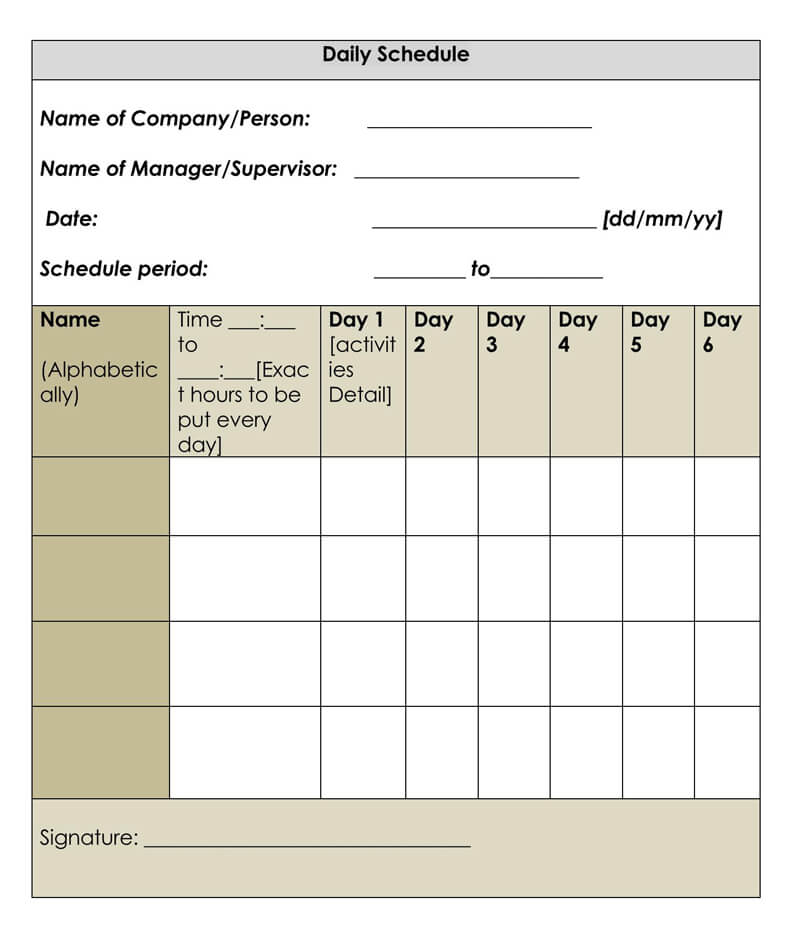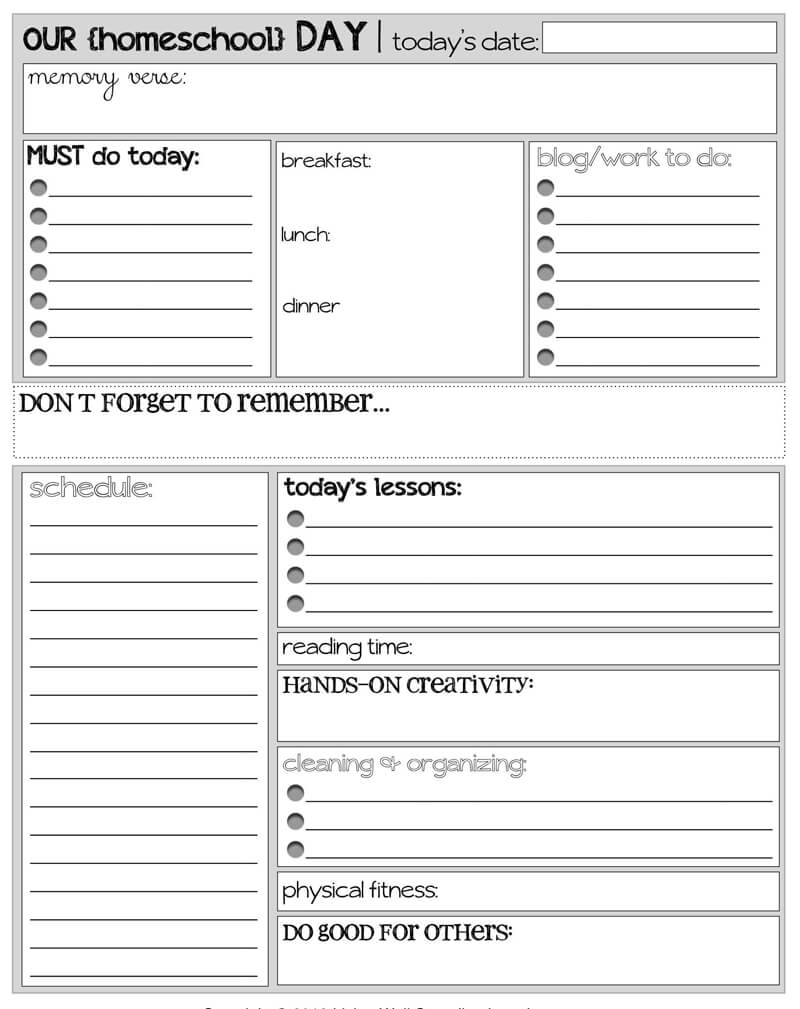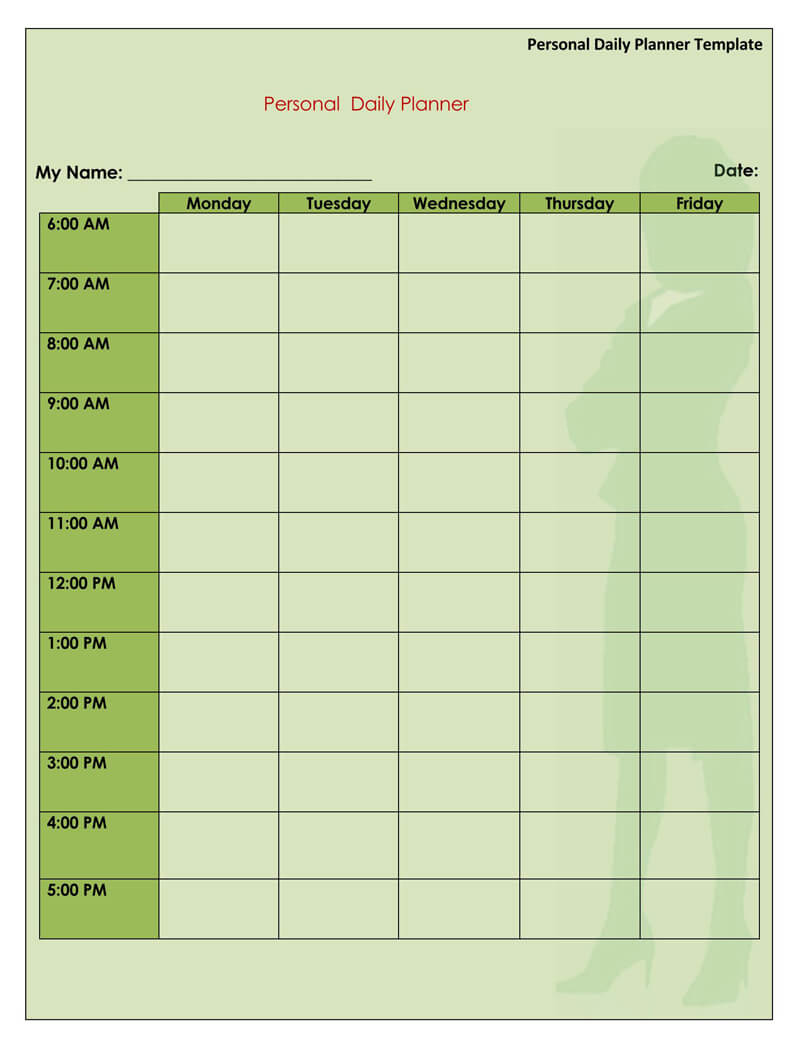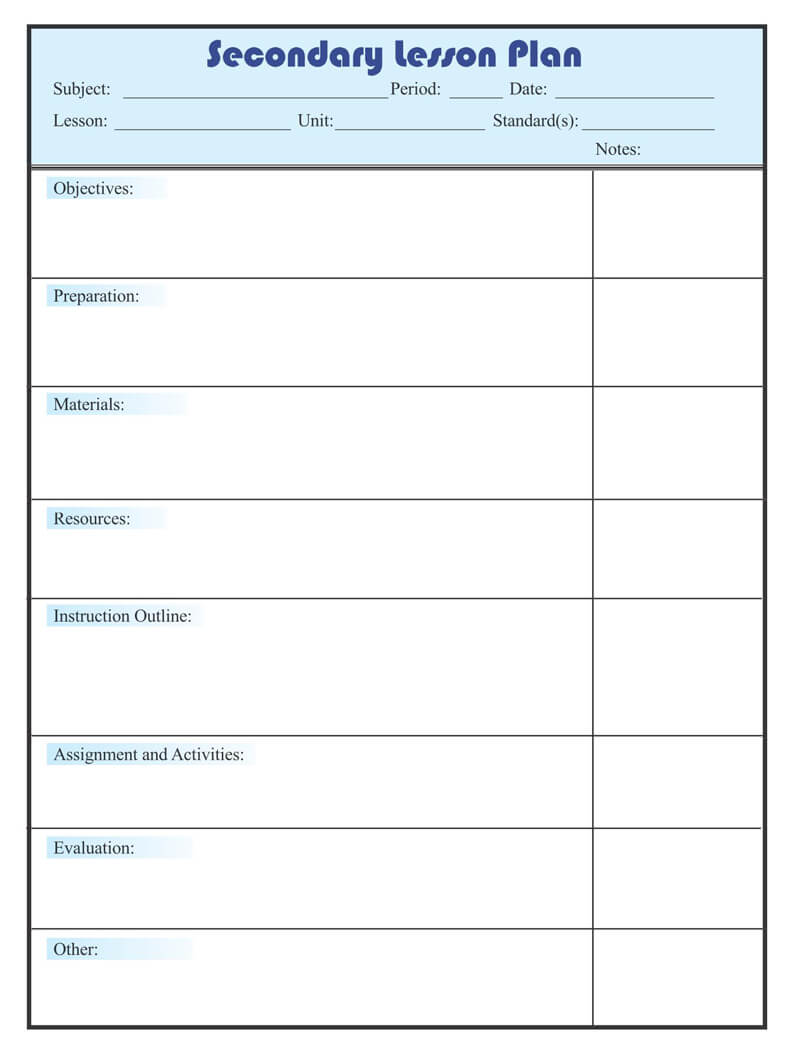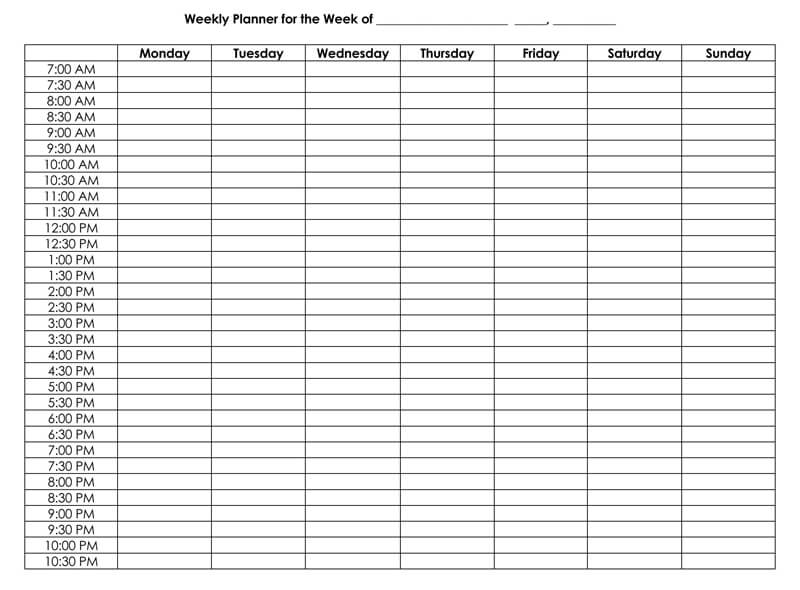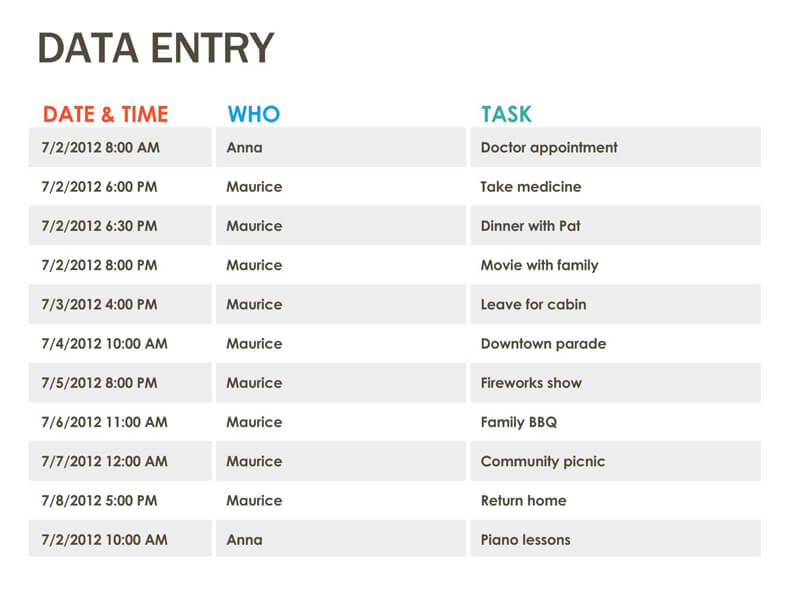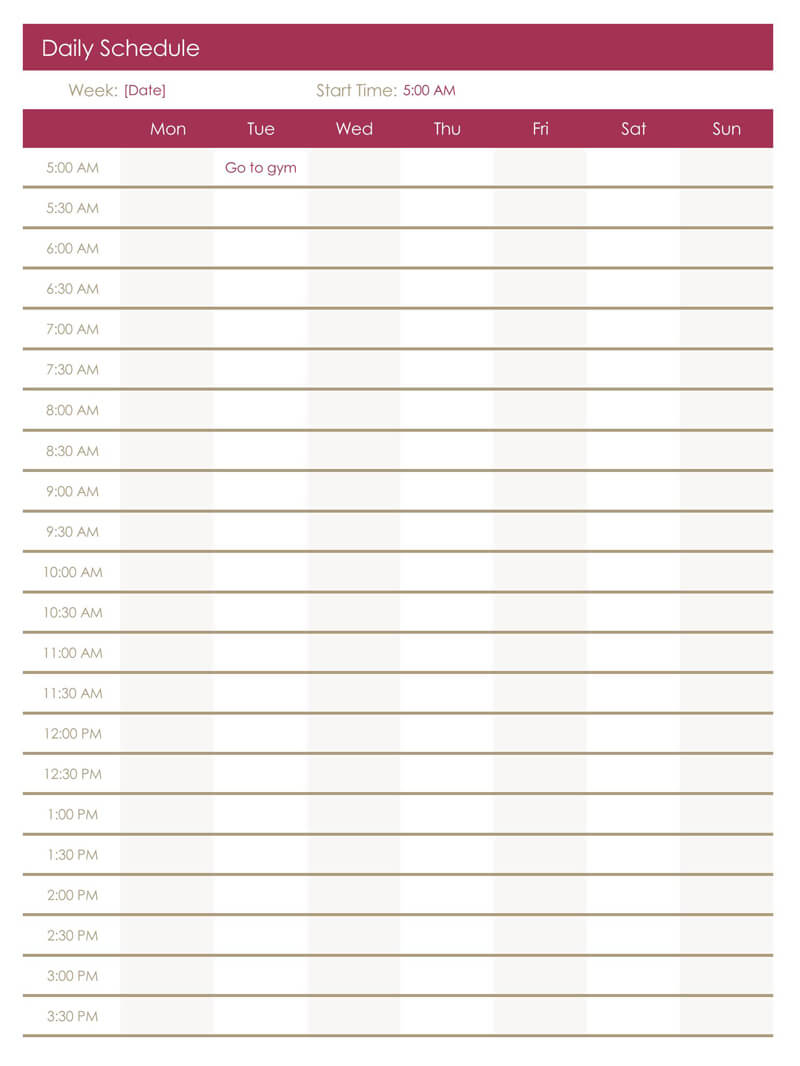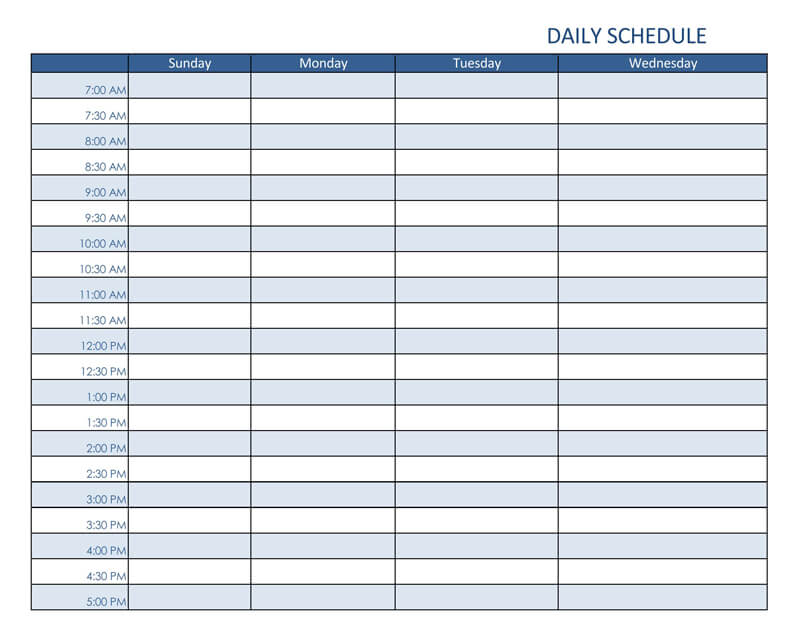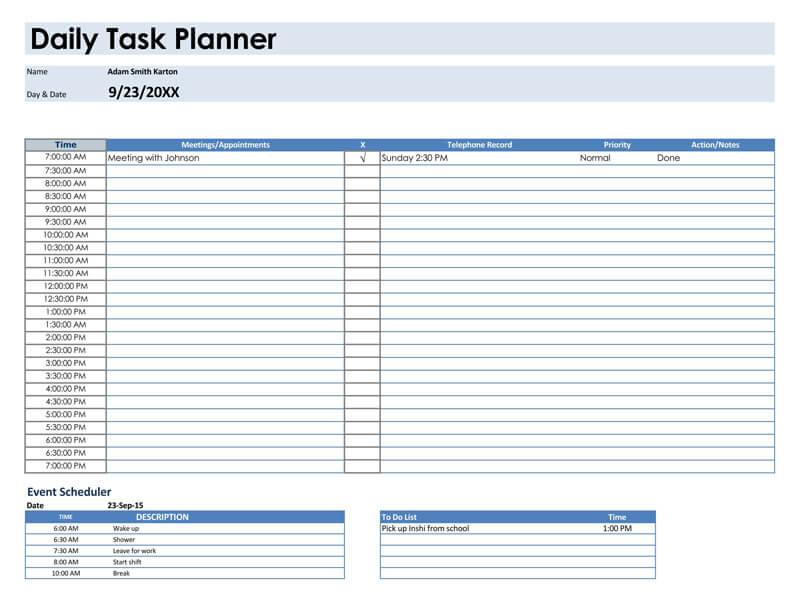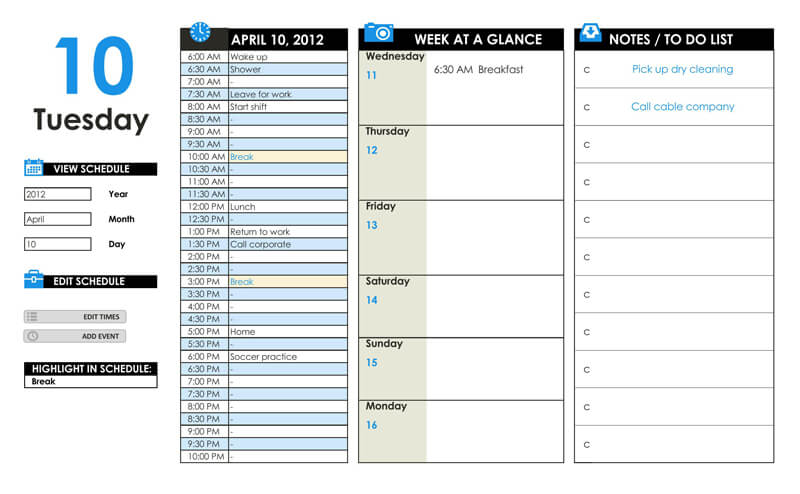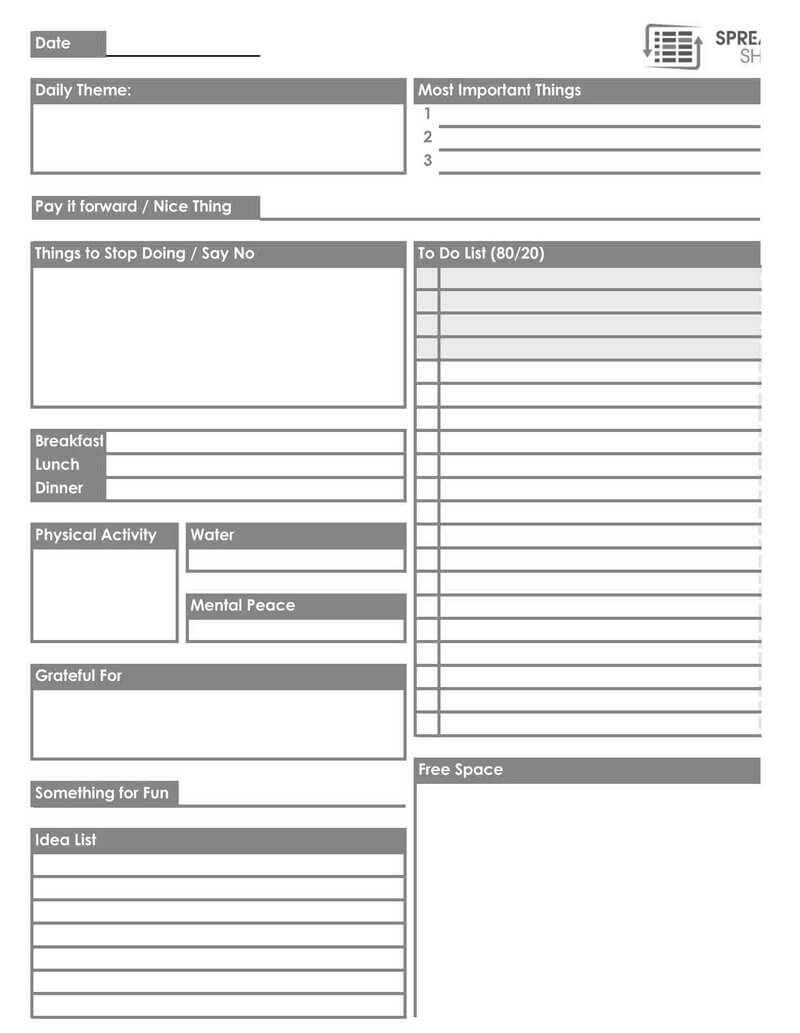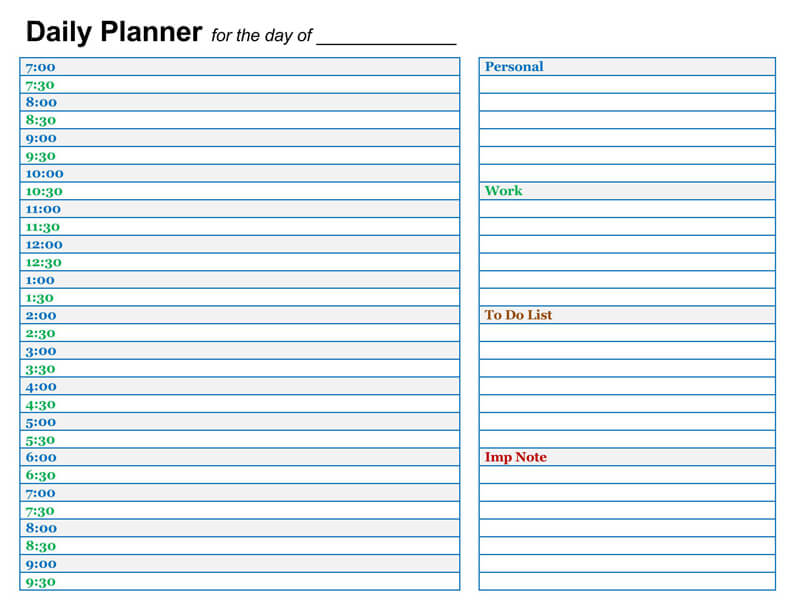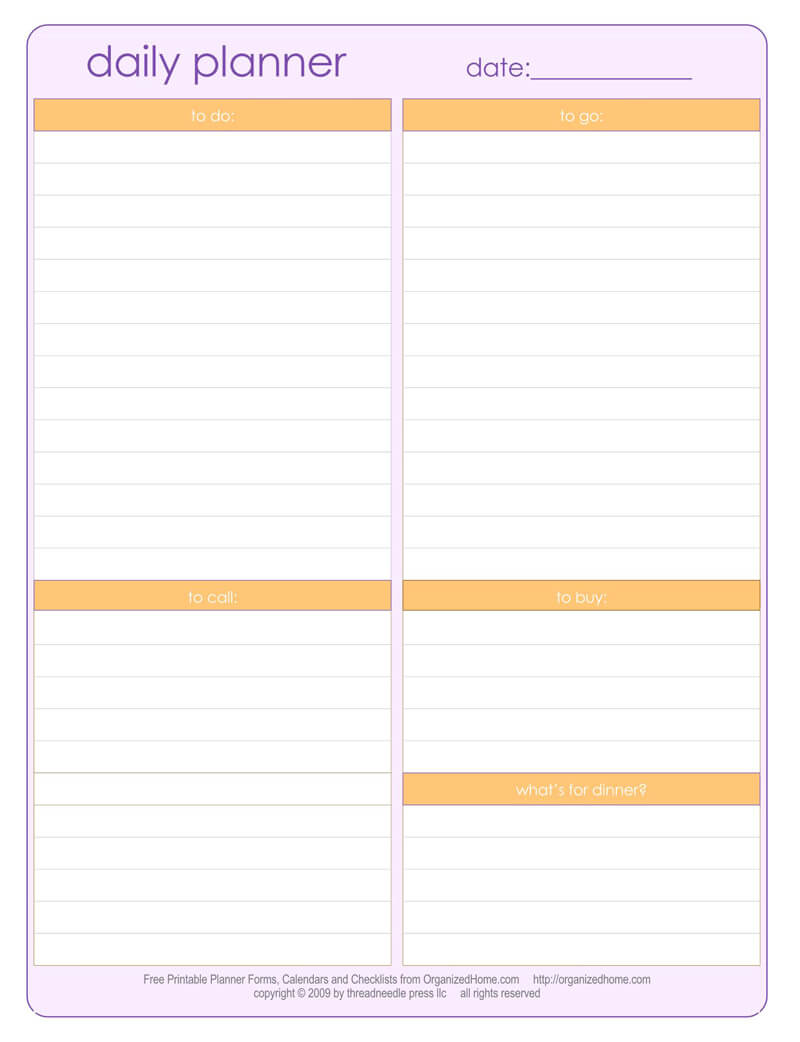Life can get busy, and it seems like a million assignments need to be done. With all the hustle and bustle of the day, it is easy to forget tasks, even important ones, and feel like you are always behind.
A daily planner template is an excellent solution to get things back on track.
5 Reasons for Using a Daily Planner
As discussed below, you will have reasons for using a daily planner to help organize your day. If you struggle to get stuff done or feel like your time management skills are lacking, this planner will help make a difference in your daily life.
- Effective time management: You should improve if you struggle to get things done daily. A daily planner can help you more effectively manage your time, and what needs to be done so you can plan out which tasks to do first.
- Boosts productivity: You can boost productivity by learning to manage your time correctly. The combined benefits of reducing the time you waste and timely response to any potential issues that appear (and will show up) can help you be more productive than ever. The daily planner will put everything in perspective and helps you get all of the tasks done that you need.
- Relieves stress: When you are unorganized, have a long list of things to do, can’t get them all caught up, and feel like you are always behind, this can add to a lot of stress. Stress often shows up when you feel overwhelmed by everything happening around you. A daily planner can help you reduce the stress that you feel daily. This tool will help you better plan, ensuring you know what to expect and when.
- Great for your health: It can be stressful when you feel like you are always running around and never getting anything done. This will cause your health to deteriorate and could make you feel burnout faster than ever before. If you allow this to happen for a long time, it could be enough to cause various mental issues too. A daily planner can prevent these mental issues and have a happier life.
- Wards off forgetfulness: One of the leading causes of forgetfulness is lack of planning. When you don’t sit down and devise a plan for your days, it is easy to forget tasks or focus on the wrong thing. Planning things out will help you not forget something. In addition, you can refer to the template before starting any activity, ensuring that all crucial tasks are easy to remember.
Step By Step Guide to Build a Daily Planner To-Do List
Before you add anything to your planner, you must create your to-do list, ensuring that nothing gets lost. Some of the steps that you can plan to help build a to-do list that will fill out your daily planner include:
Step 1: Make a to-do list
Making a daily to-do list takes time to build into a habit. You also need to take this further and ensure that any plan you create will help you reach your bigger goals. Your daily session for planning needs to include time to align each daily task with your long-term objectives. To do this:
Break down the big goals
You likely have big goals you would like to reach. Tackling the big goals all at once can de-motivate you and make it hard to accomplish anything. Instead, break it down into smaller goals to help you out. For example, maybe your goal is to deep clean your home. Break it down into small tasks according to each room that needs to be done to clean.
If you sit down to make your to-do list and struggle to get it down to what you can realistically do during the day, you have too many goals for the day. This will wear you out and can stall all of your progress. For most people, having five or fewer big goals at a time is best, and it is a good idea to mix long-term and short-term goals.
Look at the whole week
While you may be working on a daily planner, it could also be helpful to look over the whole week. You likely plan to work on more than one goal at a time, but a day won’t be enough to do it. While some of your goals may do the best if you can work on them daily, working towards others for two or three days a week could still help you gain momentum without wearing out.
Having a plan for your goals is the most crucial part. And having a week planned out at once can help you see what is coming up, giving you the motivation to finish essential tasks on time, rather than procrastinating or forgetting the assignments you need to do.
Add have to do tasks
Now it is time to plan out the day. First, it would be best to write down everything you need to do, including the meetings, appointments, and deadlines. Then look at the tasks for your goals and write them down first.
While you would love to spend time working on your goals, in the real world, you have commitments and other obligations you need to get done each day. If you cut all of these out, you can lose your jobs or not have time to spend with your families. Instead, you can learn to cut out some of the things that aren’t important to help free up more of your schedule. When you work on a to-do list, you start to see the most important things and what you can let go of.
Make one daily priority
The next thing to do is have one daily priority. Think of one task you need to complete during the day. While you may not be able to get everything done, having one big thing done significantly improves the mess you may be trying to fight through right now.
Remember that this does not mean you will never complete more than one task daily. However, completing one task will help make you feel accomplished and give you the motivation you need to tackle some of the other tasks on your list.
Step 2: Use productive planning methods
Choosing a productivity method is an effective way to get more things done during the day. You can choose many different productivity methods, as discussed below, but try a few of them to see which one works the best for you.
Eat the frog
Eat the frog method will ask you to pick out one big task that needs to be done and make it your goal for the day. The idea here is that this task may be the one you would rather avoid, which can make us procrastinate, which is why it is called eating the frog.
Whether the task feels huge, makes you uncomfortable, or very unpleasant, using this method forces you to attack it immediately in the morning to get away with that. Then you can focus on the more enjoyable tasks for the rest of the day.
Pomodoro technique
The Pomodoro technique works well by giving you short sprints for focusing on the work that needs to be done, then providing you with a break. You will focus for 25 to 30 minutes, not allowing anything to distract you and when the time is done, take a break. Do this a few times and then take a more extended break.
To plan the day with this method, you can estimate how many 25-minute sessions you will need to complete each task. You can use this to plan the whole day or as part of the top task.
Time blocking
The time blocking method asks you to write a schedule with all the tasks you need to complete. You can imagine this like a high school schedule that tells you which classes you must attend at which time. It would be best to decide how long each task will take and then block out the day to finish them in time. Then, work without any distractions and dedicate this time to completing the tasks of your choice.
As you make this schedule, don’t forget to add time for breaks. This can include time to breathe between tasks, lunch, and even commutes if you need to go somewhere to do the task, like getting groceries.
Eisenhower matrix
This method will let you look at each task that needs to be done and decide the importance and urgency of each task. The Eisenhower matrix method will ask you to break down the tasks into four quadrants and then tell you how to handle each.
Take a look at your to-do list and then decide which tasks fall into each category:
- Urgent and vital: These tasks must be done first in the morning.
- Not urgent and important: You need to get to these tasks, but you can schedule them later if you run out of time for the day.
- Urgent and unimportant: These are tasks that need to be done, but it is a good idea to see if you can delegate them to someone else.
- Not urgent and unimportant tasks: These are tasks that are not important for the day. You can delete or remove them for the day.
Step 3: Choose a planning tool
Now it is time to choose the planning tool you would like to use. Again, several options are available to help you get the work done, as follows:
- Many people like to use a daily planner as an app. This will help you place all the tasks in one location that you can access anywhere. In addition, these apps will help you keep documents organized, make changes as plans change, and give you a searchable record if you need to find something again.
- Digital list like Apple Notes and Google Keep will help you have a list of the tasks you need to complete, allowing you to check off when you’re done with a task. Microsoft Word and Google Docs are good options here too.
- A daily planner can take the form of a digital calendar. This allows you to do more with time blocking and can be utilized to add in appointments and other significant events as necessary. You can also take this calendar with you wherever you go.
- Some planners like to use paper and pen to plan a day. A daily schedule, specialized planner, or notebook can work for this option.
Step 4: Stick to the plan
Once you have a plan, it is time to stick with it. Being intentional and focusing on the work can make a big difference. The first step is eliminating some distractions as you get to work. Turn off the TV and the phone and stay away from social media so you aren’t distracted and find yourself scrolling online. Turn off the email and make it look like you are not in the office so others will not come in and try to give you more work to add to the schedule.
Stick with the plan for at least a few weeks. This helps you see whether it is the right fit for you. Then, if you feel like something is not working well, or you want to try another method, you can make changes as you go.
Step 5: Regularly consider your planning
In the real world, you would write down a to-do list and expect everything to work perfectly. But there are times when unexpected tasks make their way into the list. You will need to look at your initial plans and make some revisions which only takes a few minutes to ensure that you can fit these tasks into a new plan.
Daily Planner Templates
Using the free daily planner templates to draft these planners is always a good thing. Just download from the many we have in stock. You have the options of MS Word or Excel to choose from.
10 Practices to Effectively Plan Your Day
As you get ready to work on your daily planner, you can do a few things to help make this a little bit easier, as discussed below:
Jot down each important thing
As you make your list, jot down each thing that feels important. Of course, you can always eliminate tasks or pick which ones are the most important to do at the start of the day. But keep a running list of the tasks that have to get done at some point, so you never forget something important.
Chart out a to-do list
This shouldn’t take longer than 15 minutes to complete each day. Then, before going to bed, reflect and plan what you need to get done the following day. If you need to plan for a week or a month instead, then give yourself more time. Creating a quick plan for the next day before going to sleep can give you a head start in the morning.
Make a monthly task list
While planning daily is a great idea, you must think further into the future. The chart should have some dates you need to remember for the month, such as meetings, date nights, anniversaries, and birthdays. This will help you visualize what is coming down the line more than a day in advance.
Prioritize tasks for the week
Now that you have a list of tasks that need to be done for the month, you can plan out weekly tasks. Highlight which five tasks you must complete that week and put them down each day. Then plan out the rest of the days based on other items that need to be completed.
Track your goals
A daily planner is also suitable for helping you track your goals. Dedicate some space in the planer to get tasks done to reach those goals. You can even pick out a planner or use space in the back to help track the progress.
Improvise your daily planner
There may be some pages on the planner that you do not use or are redundant to your goals. Use those to improvise and make something new. You could turn them into a motivational booster, a bullet journal to sort out your thoughts, or meal planners. This can be an excellent place for a brain dump when too many thoughts are racing around your head. Make those redundant pages your own with a bit of creativity.
State things in a positive manner
Think about the phrases you use in your daily planner. Try to think positively as you write down things in the planner. Add action verbs to help describe what needs to be done as precisely as possible.
Don’t try to fill it completely
It is fine to have some blank spaces in the planner. However, having a little relaxation time is good for you and will help keep you on task without overdoing it all. Take this time to spend with family, do a side hobby, or relax when you can.
Accessorize your planner
When you love your planner, you are more likely to use it daily. So take some time to add accessories to personalize the planner so you can enjoy pulling it out and using it.
Utilize used planners as archives
When one planner is done, do not just throw it out. When the planner is utilized successfully, it can become a library for all your thoughts and feelings during the year. Keep the planner as a way to walk down the lane or to help you with making new plans in the future.
Final Remarks
There are many reasons to use a daily planner to help you get a life more organized. Many people struggle to keep track of their needed tasks and may feel stressed as they scramble to get it all done without much luck. When they utilize a daily planner, they can get those thoughts and tasks in order, helping them remember what must be done and ensuring nothing gets missed.
Grabbing a planner off the shelves at the store is just the first step. Then it is time to use the planner to help you organize your day and get things done. You can get the most out of your daily planner by listing your tasks, choosing the most important ones, and finding a productivity method.
